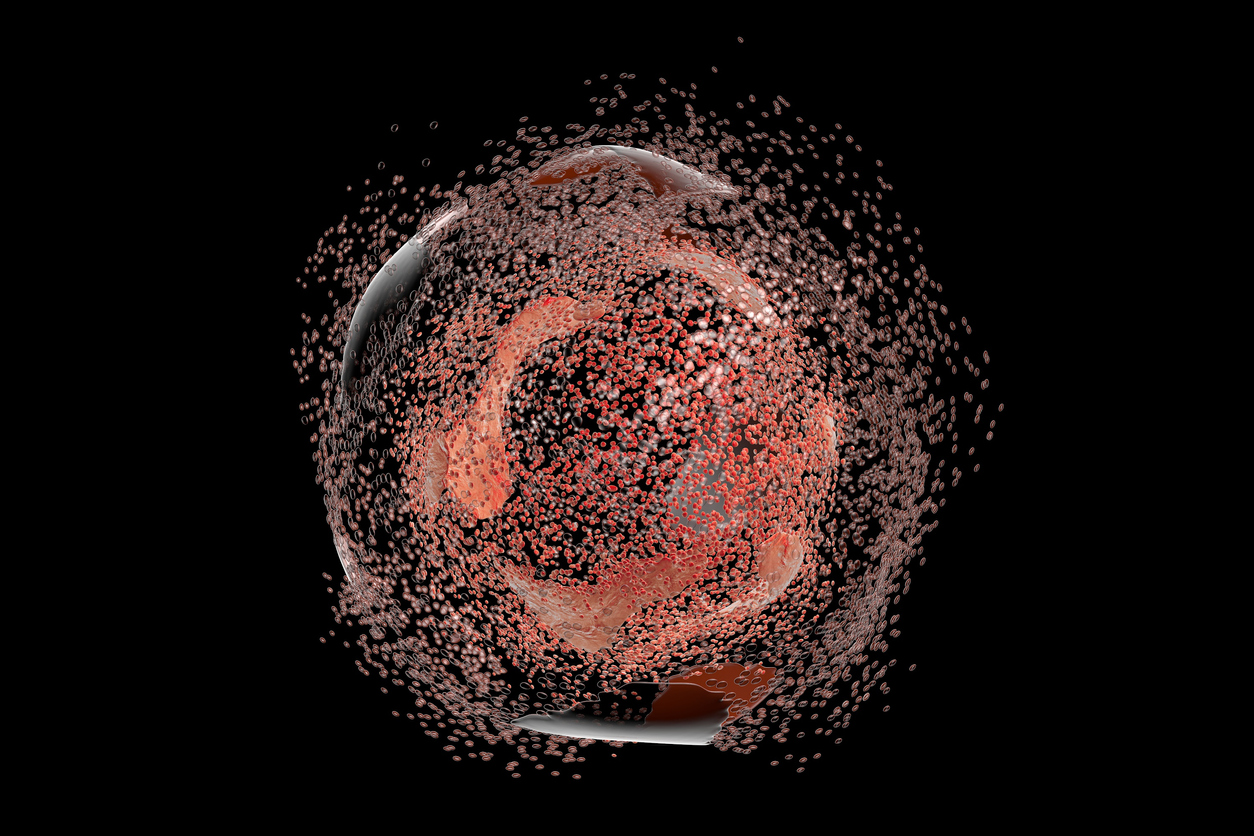Cell Growth Factors and Development
Updated on Mar 28, 2025 Share
What Is a Cell Growth Factor?
Cells grow in size as they move through the cell cycle toward eventual mitosis and cytokinesis, or cell division. To move from one stage of cell growth to the next, cells require the stimulation of surface receptors to pass entry checkpoints at each phase of the cell cycle. These signals come from cyclin-dependent kinases (CDK) and their cyclin components.
Growth factors are an extracellular polypeptide gene product that regulates cell growth, division, or proliferation and affects the concentration of cyclins and CDKs. By overriding checkpoints that keep cells in rest or G0 state, growth factors initiate entry to the full cell cycle, toward cell division. Growth factors come from several sources in the body, like platelets, fibroblasts, and skin and nerve cells.
Growth factors bind directly to surface receptors called RTKs (receptor tyrosine kinases) and initiate a cascade of intracellular signals that reach the nucleus to trigger cell division. RTKs are divided into 20 families that correspond to certain growth factors and hormones.
The signal transduction of the extracellular growth factor triggers the production of substrates like Ras and Src proteins, which transmit cellular information. These proteins work together to form a signaling network that controls the transcription nodes of specific genes. These transcriptional changes can signal a cell to move into the next cell cycle stage, trigger differentiation and apoptosis, and cause cell movement.
Cell Growth vs. Cell Proliferation
Cell growth is commonly used synonymously with cell proliferation. Cell growth is the process of cells gaining mass, relating to the size of cells and the mass of their internal components. Growth factors can affect and stimulate cell growth by promoting protein synthesis.
Cell population size is dependent on the rate of cell division, also called proliferation and/or expansion, and apoptosis, or cell death. Growth factors and mitogens can both cause a robust chain reaction of cell division, greatly increasing the number of cells present. Mitogens specifically target the negative controls of the cell cycle that block progression and development. Many molecules stimulate both cell growth and proliferation, though not in every case.
Why Are Growth Factor Proteins Important?
Growth factors bolster the response of cell expansion during healing, increasing the available number of healthy cells and allowing the body to recover quickly. This process is integral to the body’s natural development and maturation.
Inhibition of vascular endothelial growth factor and epidermal growth factor can both be used to kill tumor cells by blocking the growth of new blood vessels. Growth factors show promise in cell culturing and maintenance, as well as ex vivo cell expansion.
What Causes Cells to Stop Growing?
The body has natural mechanisms to keep cells from growing or dividing when these processes are unnecessary. These mechanisms come in the form of checkpoints throughout the cell cycle.
Depending on the concentration of growth factors in the cytoplasm and the expression of certain proteins, the checkpoints will move cells into rest phases or division phases of the cell cycle. When sensitive mutations are caused within the Ras gene, a proto-oncogene that regulates cell division and can lead to uncontrolled cell duplication or cancer, the body will halt the proliferation signal at a checkpoint, recognizing the mutation as a false alert and initiating inhibitory factors. Cancer cells evade these checkpoints by expressing mutated gene encoding components, as with the p53 gene.
Cells cannot continuously divide and are limited by their protection from DNA damage during replication. Once a cell can no longer divide and proliferate, it will either become “terminally differentiated” or die. Specifically, fibroblasts can only duplicate between 25 and 50 times until the cell experiences senescence, or old age (Tominaga K. 2015.) This inability to divide is caused by the gradual degradation of telomeres, protective caps on the ends of chromosomes that prevent DNA decay.
What Are Growth Factor Examples?
Many molecules are considered growth factors because of their ability to affect cell growth, proliferation, and cell death. PDGF, or platelet-derived growth factor, was one of the earliest GFs (growth factors) discovered.
PDGF is released by platelets as they clot to trigger cell division and increase the availability of cell supply to the clot. Another common growth factor is the epidermal growth factor, or EGF, which promotes growth and proliferation in fibroblasts and epidermal tissues.
Integral to the wound healing process, FGF (fibroblast growth factor) stimulates the production and proliferation of fibroblasts that make new tissue fill a wound space. FGF can also regulate the formation and migration of neurons that control certain hormones, like gonadotropin, which drives other hormone production.
What Factors Contribute to Cell Expansion?
Growth factors can regulate cell growth and proliferation and are utilized in lab settings to trigger ex vivo cell expansion. GFs stimulate cell proliferation in cell culture processes and can increase the yield of culture-harvested cells.
Because human immune cells are dependent on exogenous signals for growth and proliferation, growth factors can be a crucial consideration when attempting ex vivo expansion.
Akadeum Offers Cell Expansion Kits for Downstream Applications
Achieving the ideal cell culture and expansion yield is a challenging process. Akadeum provides superior products to simplify every step of cell processing.
Akadeum’s microbubble technology easily sorts for desired cells, sequestering them into a pure, untouched solution. These carefully isolated cells are ready for culturing and expansion using Akadeum’s new product offerings, expansion kits, and activation kits.
Trust Akadeum microbubbles to deliver reliable starting material, leading to top-notch downstream products.




